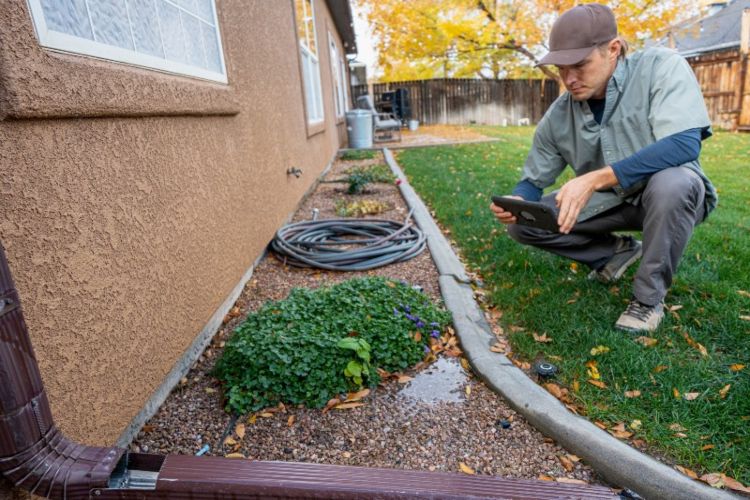
Plumbing is easy to take for granted, but you’ll quickly come to appreciate its complexity if you’re facing a leaky faucet, broken sewer pipe, or upcoming bathroom renovation. You can’t simply pick up a wrench and get to work—you must comply with both national and local plumbing codes.
Plumbing codes aren’t just guidelines—they’re mandatory standards that ensure your plumbing system’s safety and efficiency. These regulations cover everything from the size of your pipes to the slope of your drain line. Ignoring them may result in hefty fines or even compromise your home’s structural integrity. So, whether you’re considering a DIY plumbing project or hiring plumbing services, here are the most crucial plumbing codes every homeowner should know.
National Uniform Plumbing Code: A Good Starting Point
While ignorance might be bliss in some areas of life, ignorance about your plumbing system could lead to costly repairs and legal headaches. Don’t take your chances—make sure your plumbing is up to code.
Before you even think about laying a new pipe or installing a toilet, familiarize yourself with the National Uniform Plumbing Code (NUPC). This document outlines the minimum standards for all things plumbing, covering everything from faucets and fixtures to toilets and drains. Read the sections pertaining to the project you have in mind, and don’t attempt anything that contradicts the code. This is not an instance where you can ask for forgiveness instead of permission.
Ensure the Proper Drain Pipe Slope
The NUPC requires that drain lines in multi-story buildings be sloped correctly to prevent flooding during heavy rain. The drainage slope should be between 1/4 and 1/2 inch per foot. Sloping ensures the water flows smoothly toward the main sewer line, reducing the chance of backups.
Know Your Cleanouts
Access to cleanouts is a crucial plumbing code requirement. These are located in your home’s walls, basement, or crawlspace, sometimes under sinks and tubs. The cleanouts allow for easier maintenance and servicing of your pipes, so make sure they are easily accessible and labeled on your home’s floor plan.
Avoid Cutting Notches in Joists
The purpose of joists is to support the weight of the structure above it. Notching the wood might seem like an easy solution when installing pipes, but this practice weakens the joists and makes them less able to bear weight. Joists should remain intact to prevent compromising your home’s structural integrity. If necessary, drill holes according to building and plumbing codes to accommodate new pipes.
Preserve Structural Integrity
Notching joists isn’t the only way a plumbing installation could compromise a building’s structural integrity. Improper plumbing fixture installation could also pose a problem. Consult a structural engineer to ensure your home can bear the weight of new installations.
Choose the Right Material for Your Pipes
Pipe material is more than a matter of preference. Codes explain what materials can be used for what purposes. For instance, some local authorities require copper pipes for all water distribution systems, while others allow variances to this rule. PVC is a popular choice for drain pipes, but again, you should verify what your local plumbing code mandates to ensure compliance.
Use the Correct Pipe and Fitting Sizes
Another critical plumbing code addresses the proper size for drain pipes and fittings. Using the wrong size can lead to flooding and other issues. Check local plumbing codes in Seattle for the correct dimensions for your project.
Monitor Water Pressure
Adequate water pressure is a must, not just for comfort but also for plumbing code compliance. An undersized mainline, incorrect size or type of pump, or leaky pipe could result in low water pressure and a code violation.
Keep Your Plumbing Vented
Proper venting is essential for the health and safety of your home’s plumbing system. Vents eliminate unpleasant odors and moisture, and more importantly, they prevent hazardous sewer gas from seeping into your home. As a key component of responsible homeownership, venting is particularly important in cities like Seattle, where damp conditions are prevalent.
Place Your Fixtures Properly
Are you looking to install sinks, toilets, or other fixtures as part of a home renovation project? Remember to keep a minimum distance of 12 inches between each to ensure proper drainage and avoid overflow issues.
Know Your Shutoff Valves
You should know where the main shutoff valve is and familiarize yourself with the locations of individual stop valves for the faucets, toilets, and other fixtures throughout your home. This ensures that you can quickly turn off the water in a specific area in the event of a leak or maintenance work without disrupting the entire home.
Work with an Expert Seattle Plumber
While a DIY approach may save you money upfront, you run the risk of non-compliance with crucial plumbing codes. A professional can help you navigate the complexities of the NUPC and local plumbing codes to save you from future complications. You can also get help anticipating potential issues before they turn into costly disasters. Ultimately, partnering with a professional can mean the difference between an efficient plumbing system that serves you well for years and one that becomes a constant source of stress and expense.
Contact Puget Sound Plumbing and Heating
When it comes to ensuring plumbing code compliance, no one is better qualified than Puget Sound Plumbing and Heating. We provide unbeatable work and exceptional customer service. Our plumbers are even available 24 hours a day for emergency repairs. With over 20 years in the business, our skilled and fully licensed team has become a trusted name throughout Seattle. Contact us today at (206) 938-3219 to enjoy peace-of-mind plumbing services in the Puget Sound area.


